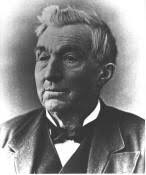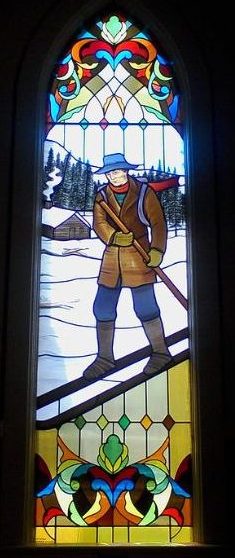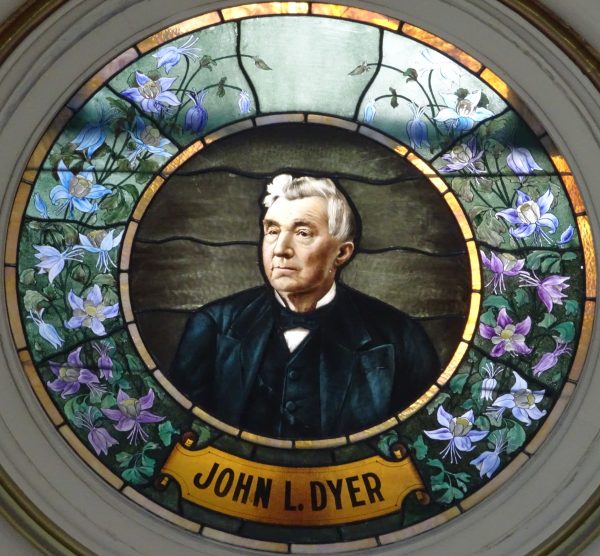Listen to this article

When: 1812-1901
Where: Central Colorado Mountains
Why important: Beloved circuit-riding Methodist preacher
Biography
John Lewis Dyer was born in Franklin County, Ohio in 1812, but spent most of his early years in Illinois. He received little formal education and, after his marriage to Harriet Foster in 1833, Dyer moved his young family to Wisconsin in order to work in the lead mines. Unfortunately, Harriet died when she was only 35, leaving Dyer with their five children. After their infant daughter (also named Harriet) died very shortly after, Dyer decided to become a Methodist minister. He became a circuit rider, meaning that he traveled from town to town as his services were needed for weddings, funerals, and sermons.

Dyer’s circuit covered a very large area across both Wisconsin and Minnesota and often meant he had to travel in harsh winter weather through very deep snows. Fortunately, Norwegian immigrants in Minnesota taught Dyer how to make skis that allowed him to travel more easily and navigate the wintery terrain. In 1861, after a decade of circuit riding in Minnesota and Wisconsin, Dyer left his younger children with his sister and headed to Colorado to join his son, Elias, who had moved to Denver shortly before. Wishing to see the mountains, Dyer started a preaching circuit through Colorado’s many mountain mining towns. He was able to use his snowshoeing and skiing experience to travel from town to town on foot, a task that had proven too difficult for many younger preachers.

However, Dyer faced a different challenge in the Colorado mining towns. The rough-and-tumble residents spent a great deal of their time drinking and gambling in saloons. Dyer saw this as a sign that his preaching was needed more than ever. He set up churches in many towns, including one in Breckenridge that still functions today: Father Dyer United Methodist Church. Dyer understood the hard lives of the miners because he had once worked in the mines. Also, Dyer’s life as a minister was far from easy. In fact, he made so little money on his circuit that he started carrying mail when he traveled over Mosquito Pass in order to make extra money. During these hard travels, Dyer became very well-known and was affectionately called “Father Dyer” even though Methodist ministers were not referred to as “Fathers.”

In 1870, “Father” Dyer married Lucinda Rankin, a widow who lived near Castle Rock. Lucinda joined Dyer and took up residence in Summit County for fifteen years until Dyer could no longer travel on his circuit. At the age of 73, Father Dyer and Lucinda moved to Denver where he wrote and published his autobiography, The Snow-Shoe Itinerant. Father Dyer died in 1901 at the age of 89, but his legacy remains in Colorado. His stained glass portrait hangs in the State Capitol, Father Dyer Peak in the Tenmile Range is named for him, and he was one of the first inductees into the Colorado Ski & Snowboarding Museum Hall of Fame in 1977.
This bio is brought to you by the Colorado State Library
- Literary Libations: Get Lit with DPL and Denver Distillery! - April 8, 2019
- Topics in History: Intersectionality in Colorado: Women’s Rights are Human Rights - March 15, 2019
- Caroline Nichols Churchill: Activist, Suffragist, Author - March 4, 2019
